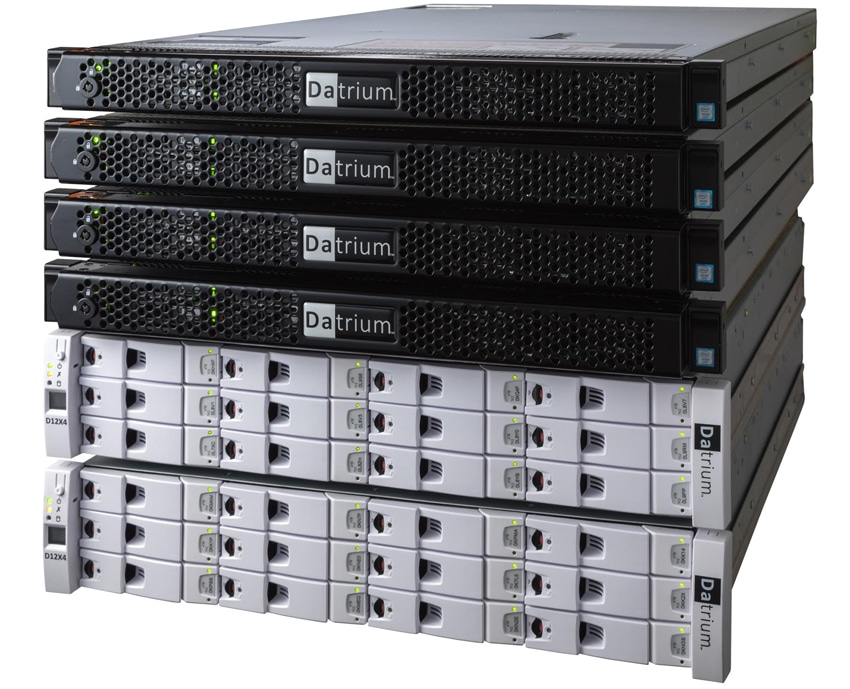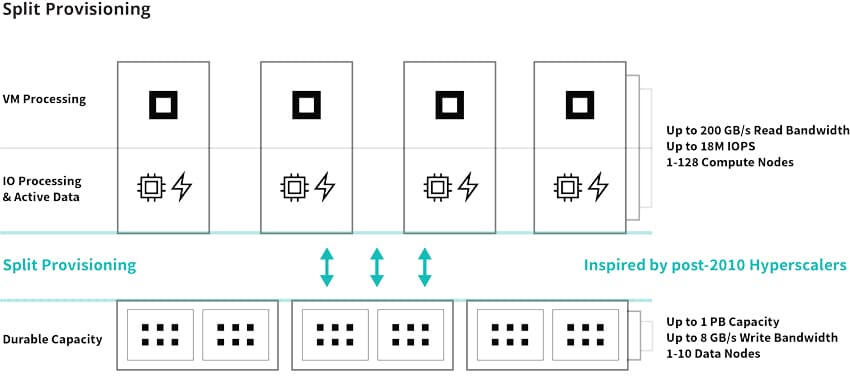Today Datrium introduced what it is calling a fundamentally new and different method of scaling converged infrastructure for private clouds, DVX 3.0 with Split Provisioning. This new software will enable the server-powered converged infrastructure system to fully separate scaling of host storage speed and persistent capacity. This will match resources to the changing requirements. Datrium intends to demonstrate its DVX platform with Split Provisioning at the VMWorld conference in Las Vegas, Aug. 27-31, booth #618.

HCI tends to use smaller clusters, keeping servers and workloads homogeneous (this is due to HCI maintaining persistent data on every server and the limitation of two or three simultaneous servers failures causing a loss of data). To get around this issue, Datrium’s new Split Provisioning will scale compute in both primary and secondary storage. Workloads will run in flash storage in Compute Nodes then write persistent data to the Data Nodes. The Data Nodes will act similar to backup appliances (optimized for cost efficiency and sequential IO). Datirum’s Compute Nodes are stateless, meaning any number can go down and high availability can be kept versus the 2-3 server failure in typical HCI.

Datrium DVX only supported a single Data Node until today with the release of the third version and Split Provisioning. With the new features, each Datrium DVX can pool up to 128 Compute Nodes and 10 Data Nodes in a single system (the minimum configuration is still one Compute Node and one Data Node). According to the company a node can be added with a one-command operation and then the system will automatically rebalance capacity.
Capabilities include:
- 200GB/s read bandwidth and 18 million IOPS, an order of magnitude higher than market-leading all flash arrays, ideal for read intensive applications like Microsoft SQL Server or virtual desktop infrastructure (VDI) boot storms
- 8 GB/s write throughput, ideal for write-intensive applications such as ingest operations for big data analytics or data warehousing
- 1.7 PB of effective capacity
As mention these new features converge compute with both primary and secondary storage. On top of that, the Data Nodes feature always-on global deduplication, inline compression, erasure coding, and Blanket Encryption. Datrium also offers its built-in cloud management software, Data Cloud, that can manage up to 1.2 million snapshots per DVX and can be replicated to other DVX devices or AWS. Application-consistent snapshots for Microsoft Windows-based applications such as MS SQL Server are also offered in 3.0. And Datrium Volume Shadow Service Provider leverages instantaneous and scalable DVX Snapshots, eliminating VM stuns and related sluggish application performance for large data sets.
Availability and Pricing
Split Provisioning software is available immediately with Datrium DVX Software 3.0 at $12,000 per Compute Node.




 Amazon
Amazon